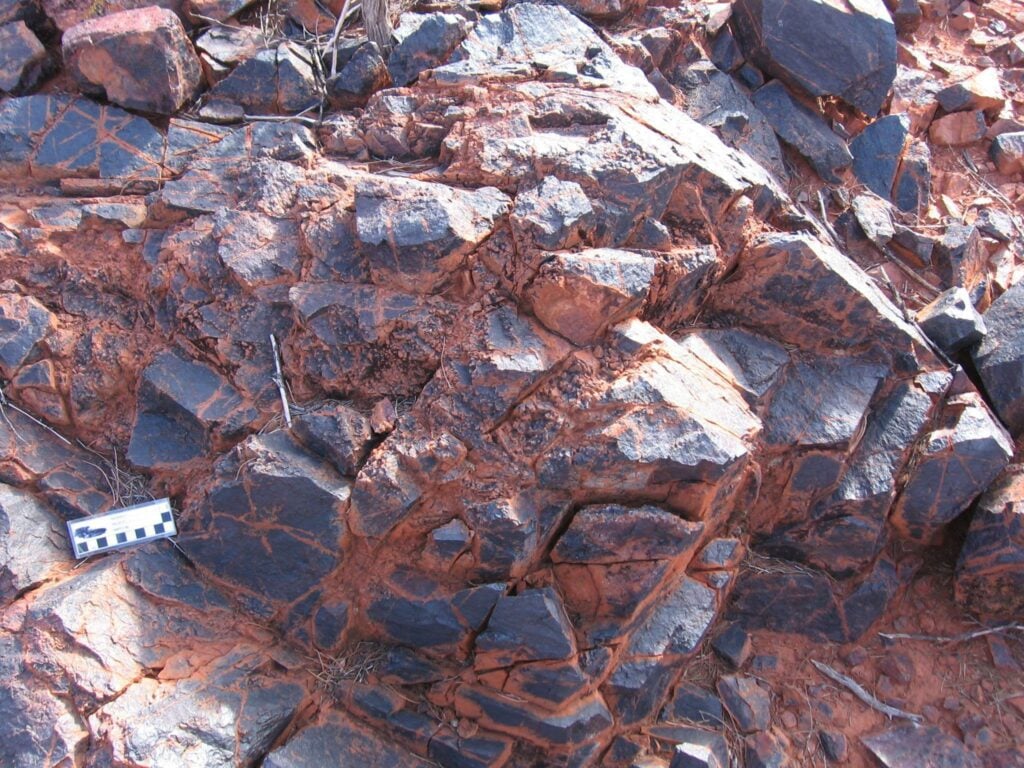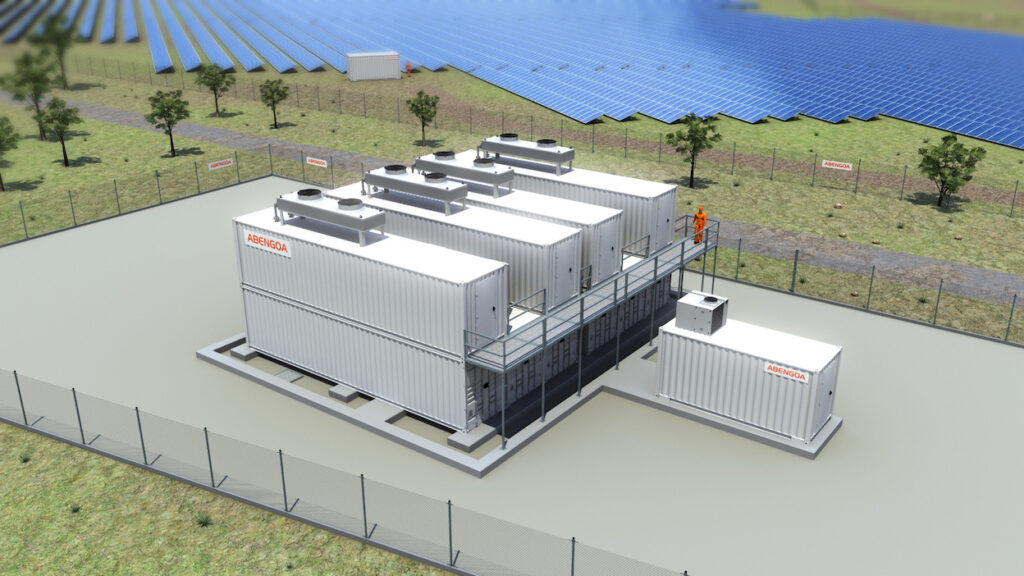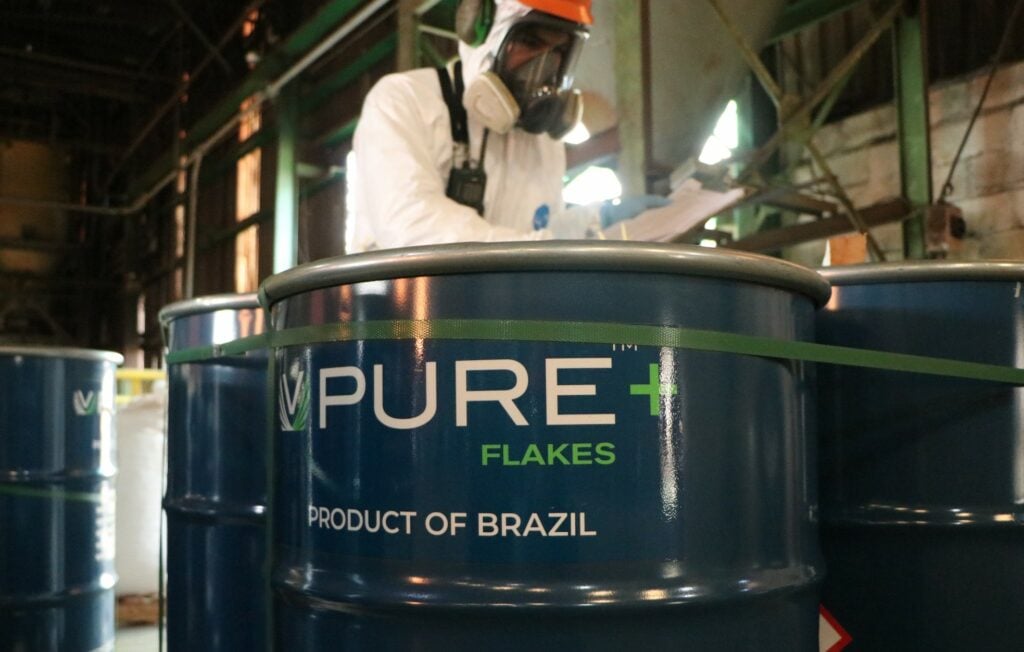
Vanadium flow batteries are considered a leading light of the push towards technologies that can meet the need for long-duration energy storage. Not least of all by the companies that mine the metal from the ground. Andy Colthorpe learns how two primary vanadium producers increasingly view flow batteries as an exciting opportunity in the energy transition space.
This is an extract of an article which appeared in Vol.28 of PV Tech Power, Solar Media’s quarterly technical journal for the downstream solar industry. Every edition includes ‘Storage & Smart Power,’ a dedicated section contributed by the team at Energy-Storage.news.
Enjoy 12 months of exclusive analysis
- Regular insight and analysis of the industry’s biggest developments
- In-depth interviews with the industry’s leading figures
- Annual digital subscription to the PV Tech Power journal
- Discounts on Solar Media’s portfolio of events, in-person and virtual
Or continue reading this article for free
The Valley of Death: the difficult gap between the tireless efforts of academics and entrepreneurs to bring their discoveries to life and establishing commercial products or services that meet true end-market demand.
It’s likely you’ve already read many articles discussing the potential of vanadium redox flow batteries (VRFBs) to offer a long-duration, high energy counterpart to the high power, shorter duration capabilities of lithium on the power grid.
Flow batteries decouple the energy and power components of energy storage systems. That means you can scale up the amount of energy (kilowatt-hours, megawatt-hours) of a system with a set amount of power (kilowatts, megawatts), giving the opportunity to store several hours of energy.
The batteries, based on liquid electrolyte, are also almost entirely free of degradation even over many years and frequent cycles of charge and discharge. They also come without the risk of thermal runaway that lithium-ion batteries can suffer if faulty, mishandled or mismanaged.
Despite these advantages, non-technical factors — mainly economic ones — have held VRFBs back. When it comes to the economics of vanadium flow batteries, the dynamics of supply and demand for vanadium, the silvery-grey transition metal which when dissolved forms the electrolyte and therefore the key component of the battery, have long been the key talking point.
There are only three primary vanadium producers in the world today; Largo Resources, which has a mine in Brazil; Bushveld Minerals, which has mines in South Africa and mining giant Glencore (also South Africa). They account for roughly 20% of the world’s vanadium supply, while about 70% comes from co-production — vanadium as a by-product of steel production. Secondary production, recycling of spent oil refining catalysts that contain vanadium, accounts for about 10%.
Two of those primary vanadium producers, Bushveld and Largo, are betting big on the success of VRFBs. Both have established subsidiaries which diversify their interests into the energy sector. So are these primary producers taking a serious gamble here? And what strategies do they have for entering this brave new world?
A sensible bet
According to Erik Sardain, a principal consultant at critical materials supply chain intelligence group Roskill, about 116,000MT of vanadium was produced globally in 2020. Adding small amounts of vanadium to steel creates much stronger alloys and more than 90% of vanadium consumption was accounted for by steel production last year. Smaller market shares were taken by aerospace, chemicals and other industries where it is also used.
Sardain says “a very, very, very small” percentage was used for flow batteries in 2020, with no major projects coming online. In 2017 and 2018, between about 1% and 1.5% of vanadium demand came from the VRFB sector. By about 2030, however, this figure could rise to 10% according to Roskill projections. Flow battery demand is a ‘wild card’ for vanadium, he says, largely dependent on how the technology is going to evolve.
“It’s very difficult to put a number on because it is something which is very binary. But, I think one of the questions a lot of people have is: ‘Yes, but if the demand for VRB is really high, will you have a shortage of vanadium?’”
“I say no, because I believe that your supply and your demand are going to go in tandem, hand-in-hand. Because, if you have a new project of vanadium, you will not have the funding, banks are not willing to give the money unless you have some off-takers. Your demand is going to create your supply.”
Bushveld Minerals and Largo Resources have customers in areas including steel and aerospace. In Sardain’s view, they regard energy storage as a growth area with great potential, not an area into which they have to diversify or die.
“Let’s take a worst-case scenario: Largo’s production is going to be 6,500 tonnes of vanadium per annum. Even if the VRFB technology doesn’t really take off, they will still have demand from aerospace, they still have demand from the chemicals industry. So they can probably live without it,” Sardain says.
Fortune Mojapelo, Bushveld Minerals’ CEO, says that steel is still the biggest driver of demand for his company and will remain the “main underwriter of demand,” but flow batteries will become a serious opportunity.
US analysis and research group Guidehouse Insights has projected that 100GWh of new energy storage could be deployed in the next six years worldwide and Mojapelo says that even if VRFBs capture only 10% of that market, we’re talking about 10GWh of storage systems.
“We would need about 55,000 tonnes of vanadium just to support that. VRFBs in time will contribute a significant amount of vanadium demand, way up from the single digits that it is today,” Mojapelo says.
If the market does take off, the primary producers will have a competitive advantage over later entrants, smaller producers who Sardain says are unlikely to be able to come to market any time before 2024.
“They’re taking a gamble, but a gamble in a position of strength.”

The long road to long-duration
As we heard in our interview with University of New South Wales emeritus professor Maria Skyllas-Kazacos (see p.79 of PV Tech Power Vol.28), one of the original inventors of the vanadium flow battery, a gap of more than three decades passed from the first discovery of vanadium pentoxide as an effective electrolyte to today, where we are seeing commercially available VRFBs.
Fortune Mojapelo says it’s an idea and a technology whose time has now come. Global energy consumption is increasingly taking the form of electricity, from about 10% in 1980 to 20% today. By 2050, it is projected to be 45%, not least of all because of the growing electrification of “just about everything, including mobility,” Mojapelo says.
“With the move to clean energy, renewable energy is going to be a big part of new electricity generation capacity going forward, helped in large part by the cost-competitiveness of renewable energy. Today, we’ve got solar for example, which is comparable, if not cheaper, than fossil fuel-based electricity.”
But with renewable energy from wind and solar intermittent — or variable — in its generation profile, energy storage will grow in importance, while the Bushveld CEO says the uptake of energy storage will also be driven by the need for utilities to become more efficient in how they use their capital.
“Energy storage can help a grid become a lot more efficient. It is not only for integrating renewable energy, but it helps, for example, with smoothing out your demand curve, load curve, away from a peak kind of construct shape to a flatter load curve. Storage helps, because you can basically load shift, you can you can store power during off-peak, which you can use to supplement during the peak hours.”
“Within that, long-duration energy storage is going to be the biggest share of stationary energy storage, will account for more than 90%,” Mojapelo says.
“That’s great news for vanadium flow batteries, because they are really great and efficient for long-duration. Unlike lithium-ion, in a vanadium flow battery, the energy component where you store the electricity in the electrolyte is distinct from the power unit. If I want to store more energy, I don’t have to replicate the entire system, I just need to extend my electrolyte tank content. Which is why the more energy I need to store, the more hours’ duration, the more efficient it becomes.”
For Bushveld, the question then became how the vanadium producer should support the rise and promotion of VRFBs. The answer, its CEO says, is around creating a vertical integration model between supply of vanadium and the production and deployment of battery storage using it.
Bushveld has established a subsidiary, Bushveld Energy, which is currently building an electrolyte processing plant in South Africa, near the parent company’s vanadium mines. Bushveld Energy is also aiming to support VRFB deployments with project development, such as contracting Abengoa to build a system at Bushveld’s own facilities. It has also invested in VRFB manufacturers, like Anglo-American company Invinity Energy Systems and Austria-headquartered Enerox-CellCube.
Changing a sceptical position on flow batteries
Largo Resources produces about three tonnes of vanadium pentoxide (V2O5) per month from its mine in Brazil. Largo is also bullish on the prospects for flow batteries and going even further into vertical integration, launching subsidiary Largo Clean Energy, which will make its own VRFB systems.
“It’s been a long time coming for this energy technology to develop and I have to admit, until a year or two ago, I was very sceptical. People were talking about how good it was, but we did not see any demand in the market,” Largo Resources commercial VP Paul Vollant says.
However, there were a few different drivers that led Largo to rethink its position: “To the point that we are now completely transforming the whole company to focus on on integrating this battery business and essentially becoming a vertically integrated battery manufacturer,” he says.
Vollant says Largo’s position as a primary producer offers a head start, which it needs to capitalise upon. Largo needs to be “very dynamic,” he says. The need for long-duration energy storage is “evident” and the company is “getting more enquiries than we can process”.
The vanadium Largo has been producing for many years could be a key component in an earth-saving transi-
tion to renewable energy. Yet without an economic imperative the strategic transformation of the company would not be happening.
“We’re very confident that we can make more money from batteries than from the traditional markets,”Vollant says.
“We looked at the historical average price of vanadium pentoxide, which is about US$8 per pound and we translated that into a cost of storage for a vanadium redox battery, and at that particular point, we are much more competitive than lithium batteries, our main competitor right now, for…let’s say six to eight hours duration.”
In June, Largo Resources held a “Battery Day” to highlight its strategies for entering the global VRFB industry. While vanadium pentoxide (V2O5) as an additive for steel manufacturing is indeed around US$8 per pound, in the energy storage business that same V2O5 could be worth more than US$12.

Why leasing is so important
As mentioned previously, the upfront cost of flow batteries has been a major barrier to their market uptake. Although they actually come at a lower lifetime operational cost, Capex investment required has been an obstacle for many potential customers.
Granted, electricity market rules and design will have to change in the coming years to adapt to the need for long-
duration storage. This is already happening in some parts of the world, like California which is preparing to launch its first gigawatt tender for long-duration in the next couple of years. The technology of VRFBs is gaining acceptance after several years of deployments around the world.
But even this being the case, how can a company like Largo seek to make higher margins from VRFBs than its other off-take industries without confronting the customer with costs that are too high?
Largo, as well as Bushveld, sees the answer in leasing the electrolyte, the flow battery’s single most expensive component.
“The reality in a VRB is that the economics are very different from a lithium battery and lithium battery has a much lower capex, upfront cost, but much higher Opex. Long term, operation and maintenance cost. Lithium batteries are cheaper to make for the same capacity, but they degrade quite fast,” Paul Vollant says.
“If you were paying for the full cost of a lithium battery, and for the full cost of a vanadium battery, you probably be ending up paying about US$6 to US$7 for lithium battery and probably US$10 for VRB upfront, but over 25 years, you probably need to replace your lithium battery two to three times.
So your lithium system will cost you much more at the end of the day, compared to a vanadium battery that does not degrade because of the intrinsic technical aspect of the electrolyte, the fact that it’s vanadium on both the anode and the cathode side, there is no contamination and there is no degradation of the battery efficiency.”
However, vanadium flow battery companies have to confront the fact that today’s electricity market is largely focused on that Capex upfront cost. By leasing the electrolyte that uses vanadium coming straight from its parent company’s mines to its customers, Largo Clean Energy will be able to effectively “subsidise” the battery initially.
“We’re not getting the customer to pay for the full cost of the vanadium that is in it, but we are replicating the cash flows of lithium batteries.”
This is an extract of an article from Volume 28 of PV Tech Power, our quarterly journal. You can buy individual issues digitally or in print, as well as subscribe to get every volume as soon as it comes out. PV Tech Power subscriptions are also included in some packages for our new PV Tech Premium service.
